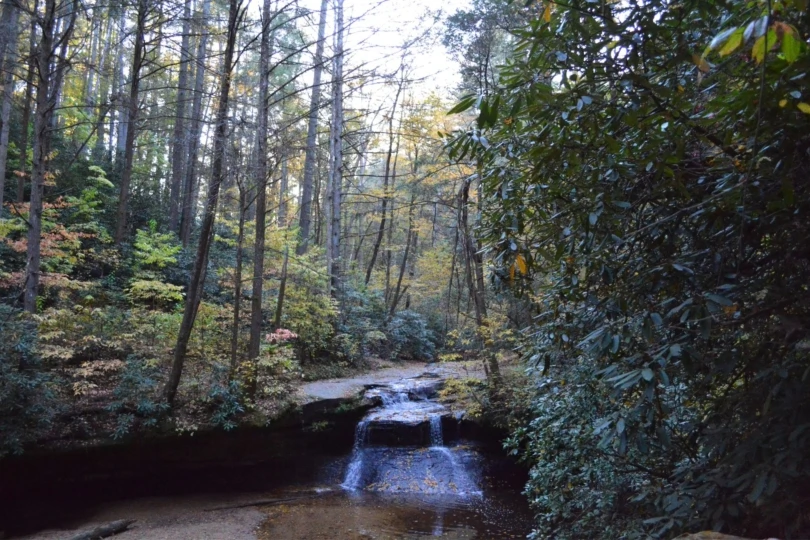The vast majority of us are familiar with America’s National Parks. But what about the National Seashores? In short, national seashores are a part of the National Park Service (NPS) but have a different designation — like a national monument or national forest.
Federally appointed by Congress as coastal areas that are of natural and recreational significance, national seashores focus on the preservation of a coastline’s natural values, while also providing water-oriented recreation and education.
So, what makes National Seashores special?
These coastal areas have rich, biodiverse environments that are critical to protecting coastal communities and ecosystems from extreme weather. Plus, they offer endless opportunities for seaside adventures. But they are also especially vulnerable to the threats of climate change.
So it’s important to understand what these natural treasures are and how you can visit them responsibly. Supporting these areas will help ensure their health and vitality for future generations.
In total, there are 10 National Seashores located on the Atlantic, Gulf, and Pacific coasts — so you could check them all off your bucket list. Here’s an at-a-glance rundown of how to visit and what to do at each location.
Visitors Guide to Every National Seashore
Cumberland Island

Seven miles off the coast of southern Georgia, you’ll find the state’s largest barrier island. Known as Wisso by the native Timucan nation, Cumberland Island is home to one of the most important loggerhead turtle nesting sites in the southeast.
Only accessible by private boat or ferry, permits are limited to just 300 visitors a day. That means it is easy to ditch the crowds and find your own secluded stretch of pristine, undeveloped shoreline, or dense live oak forest.
While you are welcome to visit for the day, we recommend at least 2 to 3 days to explore the ocean and estuaries, beaches and dunes, oak and pine forests, as well as salt marshes and freshwater wetland ecosystems this remote island has to offer.

Historically rich as it is biologically diverse, Cumberland Island was once a gilded age playground for the Carnegie family and their fellow titans of industry. Today, you can tour the mighty ruins of Dungeness as well as the impressive Plum Orchard mansion.
Head north on the island to visit the first settlement, where emancipated slaves of the Gullah Geechee culture created a thriving community and built the First African Baptist Church in 1893.
Trip Idea: Bikepack on Cumberland Island
Cumberland Island is an ideal spot for your first bikepacking trip! Although loose sand can be challenging at times (we recommend fat tires), Cumberland Island is flat and easy to navigate.
From Sea Camp Ranger Station, head north on the Main Road for approximately 5 miles, keeping an eye out for the many feral horses that inhabit the island. Once you reach the Willow Pond Trail, stash your bike (no bikes are allowed on backcountry trails) and find camp at the Hickory Hill backcountry campsite.
From basecamp, hike the rest of the Willow Pond Trail to the beach, taking in the dynamic maritime forests, Carolina jasmine, neon saltwater marshes, rolling dunes, and miles of undisturbed shoreline — perfect for beachcombing.
Be aware of wildlife — it is common to run into armadillos, alligators, feral hogs, and feral horses while on the trail.

Having a bike makes it easy to explore the most remote pockets of the island. Hop back on your bike and ride north on the Main Road for about 6 miles to the Brickhill Bluff Trail.
Tucked along a brackish river, the Brickhill Bluff campsite is a great spot to take lunch and watch pods of dolphins swim out with the tide.
If you’re feeling adventurous (and have plenty of water), continue riding another 4 miles north to check out the First African Baptist Church, the Museum of African American history, and Whitney Lake, where the island’s largest alligator is rumored to hang out.

Things to Know
- Location: Mainland Visitor Center, 113 West St. Marys Street, St. Marys, Ga. 31558
- Getting there: Cumberland Island is only accessible by ferry. Reservations are strongly encouraged.
- Camping: Permits for both group campsites and backcountry campsites are required.
- Bikes: Bicycles are permitted on the island. Visitors can bring their own for a $10 fee. Bicycles are only allowed on the Main Road and on the beach between Sea Camp and Dungeness sea crossings.
- Entrance fees: $10 for adults, youth under 15 years are free.
Cape Cod National Seashore
Jutting 60 miles out into the Atlantic Ocean, Cape Cod National Seashore offers 40 miles of pristine sandy beaches, marshes, ponds, and even wild cranberry bogs stretching from Chatham to Provincetown. Home to 370 species of shorebirds, Cape Cod National Seashore is a birder’s paradise. Be sure to bring your binoculars!
Cape Cod National Seashore is steeped in early American history. For nearly a century, an area known as Peaked Hill Bars has attracted writers and artists seeking the isolation and inspiration provided by the moody Atlantic coastline.
Icons of American art and literature like E.E. Cummings, Jackson Pollock, and Henry David Thoreau each lived and worked in weathered, primitive dune shacks left behind by the United States Life-Saving Service, whose mission was to assist survivors of shipwrecks in the early 20th century.
Today, modern creatives have the opportunity to apply for artist residencies through nonprofits like thecompact.org.

Trip Idea: Hike Great Island to Jeremy Point and Tavern Loop
The longest hike in Cape Cod National Seashore, this 9.1-mile loop near Wellfleet is considered to be one of the best hikes in all of Massachusetts. From the Great Island parking area, the trail starts off on a slight descent through a maritime forest toward “The Gut,” a stomach-shaped section of the Herring River that connects to Wellfleet Harbor.
Keep left on the sandy trail toward the elevated heights of Great Island and the Smith Samuel Tavern — an archaeological site marking where a 17th-century whaling tavern once stood.
The hike continues through even-aged pitch pine forests and saltwater marshes to the base of Great Beach Hill, a colossal sand dune standing 75 feet tall. After a quick but challenging ascent, you’ll be rewarded with sweeping views of the Herring River, Wellfleet Harbor, and Cape Cod Bay.
If you time it right, you can extend the hike to Jeremy’s Point Overlook, which is a sandbar-like stretch of beach that emerges at low tide. This leg of the journey offers a very secluded beach experience, with plenty of opportunities to birdwatch and beachcomb for razor clams, lady slipper shells, and bay scallop shells — often seen as a symbol of Cape Cod.
From Jeremy’s Point, head back north on the Great Island Trail for an easy return hike along the beaches of Cape Cod Bay. Always be mindful of the tide, bring plenty of water, and pack sun protection.
Things to Know
- Location: Salt Pond Visitor Center, 50 Nauset Road, Eastham, Mass. 02667
- Getting there: Once on the Cape, most park features are off Route 6 from Eastham to Provincetown. Stop at a park visitor center or at a chamber of commerce to get a map of the local vicinity.
- Camping: Cape Cod National Seashore does not offer camping, but Nickerson State Park and Wellfleet Hollow Campground are nearby state campgrounds and can be reserved on Reserve America.
- Bikes: Bikes are allowed on the three designated national seashore bike trails, on paved roads and parking areas, and on unpaved roadways (fire roads). Bicycles are not permitted on hiking trails or on beaches.
- Entrance fees: All hiking trails are free, but beaches require a $15-25 entrance fee.
Point Reyes National Seashore

Less than 2 hours north of San Francisco, Point Reyes National Park offers visitors an 80-mile tapestry of estuaries, bays, lagoons, tidal mudflats, marshes, grassy bluffs, and forested ridges that support an abundant diversity of wildlife.
This California gem has 150 miles of trails and several secluded beaches to explore, like Point Reyes South Beach, where a colony of elephant seals can be viewed.
For more wildlife viewing, head to the Tomales Point Trail on the northernmost part of the peninsula to see tule elk, an elk subspecies that is historically native to the region and was once on the brink of extinction.
Trip Idea: Backpack to Wildcat Campground and Alamere Falls
After reserving well ahead of time, pick up your backcountry permit from the Bear Valley Ranger Station and make your way to the Bear Valley Trailhead. Hike through the thick Douglas fir forests along the Bear Valley Trail for about 3 miles before turning left onto Glen Trail.
You’ll crest a ridge to the Coast Trail, where you can take in expansive ocean views (if it isn’t too foggy). Hang a sharp right on Stewart Trail for a short walk to Wildcat Campground.
The most remote camp in Point Reyes, Wildcat Camp is a picturesque field on top of a seaside bluff. Here you can set up camp and continue on to Wildcat Beach and Alamere Falls.

A dramatic sight to behold, Alamere Falls is an impressive 40-foot-tall cascade that flows directly into the ocean — a feature shared by only 34 waterfalls in the world.
But before you make the trek, be aware of tides and surf conditions. You will need a low tide to safely walk along the beach to the base of the falls.
Things to Know
- Location: 1 Bear Valley Road, Point Reyes Station, Calif. 94956
- Getting there: The Bear Valley Visitor Center is located approximately 30 miles north of San Francisco, less than a mile off Highway 1 along Bear Valley Road. Travelers may approach the park via the winding scenic Highway 1, either from the north or the south.
- Camping: Point Reyes National Seashore only offers backcountry hike-in and boat-in camping. Site availability is limited, so be sure to plan ahead.
- Bikes: Point Reyes permits biking only outside of wilderness areas along emergency access/dirt fire roads, paved roads, and a few single-track trails.
- Entrance fees: Point Reyes does not require an entrance fee, but campsites start at $30 per site, per night.
Assateague Island National Seashore
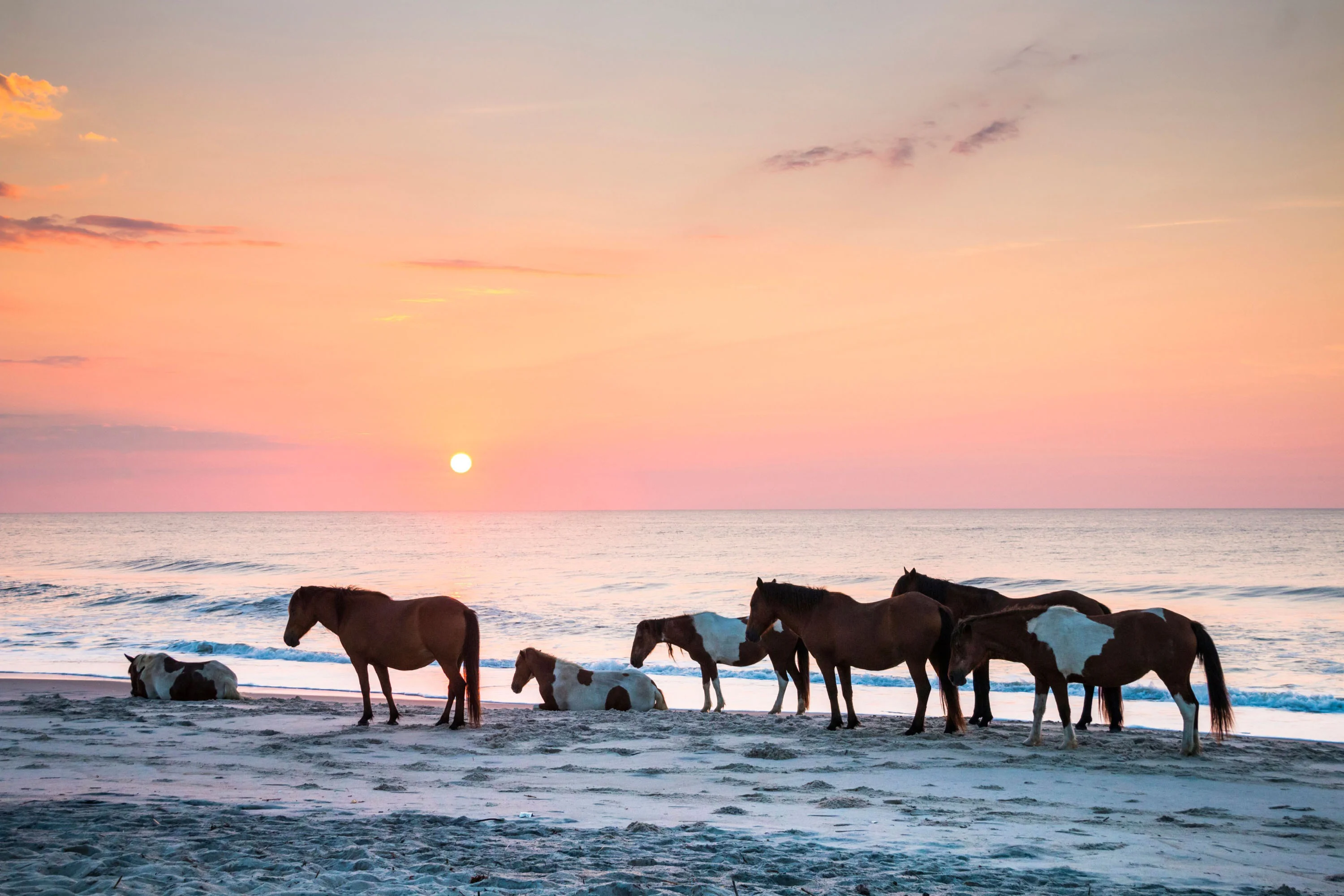
An easy 3-hour drive from major metropolitan areas like Richmond, Va., Washington D.C., Baltimore, Wilmington, N.C., and Philadelphia, Assateague Island is the largest barrier island ecosystem in the Mid-Atlantic to remain largely unaffected by human development.
Narrowly escaping a fate as a private resort community, the national seashore was founded in 1965 following a devastating storm that destroyed the existing infrastructure and halted plans to develop, becoming the fifth national seashore designated in the United States.
Beyond the 37 miles of pristine beaches, marshes, and bays, Assateague Island is most well-known for its wild horses. Although there are no records to confirm such lore (according to the NPS), local legend has it that the Assateague horses are descendants of Spanish shipwreck survivors off the coast of Virginia in the 18th century.
Trip Idea: Experience Assateague in the Fall
Fall hunting at Assateague National Seashore isn’t just about sport — it’s a conservation tool. Limited bag tags, harvest reporting, and regulated seasons help manage the island’s abundant deer and waterfowl populations and protect the island’s sensitive coastal ecosystem.
Hunting is strictly limited to authorized areas and dates, and all activities must follow NPS regulations and Maryland state hunting laws. This balanced approach ensures both visitor safety and the long-term health of Assateague’s natural landscapes.
Whether you’re tracking a sika deer through dense dune grass or waiting patiently in a marsh-side blind, hunting at Assateague offers an immersive way to experience the island’s wild, untamed beauty. Plan your trip and learn more at the NPS info site.
Things to Know
- Location: 7206 National Seashore Lane Berlin, Md. 21811
- Getting there: North entrance is at the end of Route 611, 8 miles south of Ocean City, Md. The south entrance is at the end of Route 175, 2 miles east of Chincoteague, Va.
- Camping: 2 drive-in campsites and 2 walk-in campsites; all backcountry campsites are closed during hunting season
- Permits: Check the NPS page for the most up-to-date info on visiting and hunting
- Fees: $25 per private vehicle, $20 per motorcycle
Canaveral National Seashore
Just a stone’s throw from the Kennedy Space Center, Canaveral National Seashore is one of the most diverse and productive estuaries in North America. In addition to 24 miles of untouched shoreline, visitors can explore Mosquito Lagoon, which is federally recognized as an ecologically, economically, and culturally vital estuary under both the Clean Water Act and the Outstanding Florida Water Act — the highest level of water quality protection in the Sunshine State.
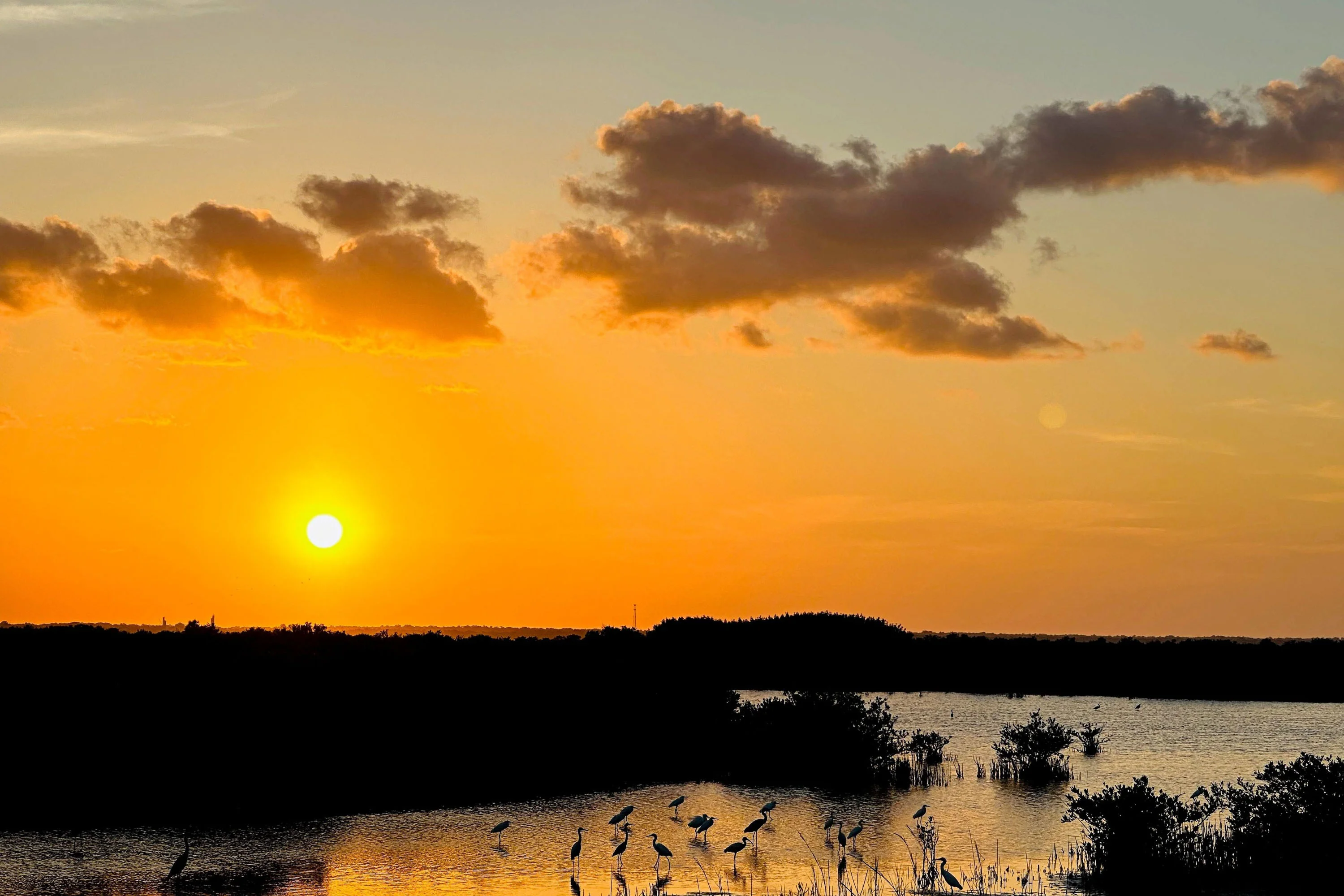



Home to 4,300 species of plants and animals, as well as vital nurseries for fish and shellfish, the habitat provided by Canaveral National Seashore is critical to the survival of threatened and endangered species like the West Indian Manatee, Leatherback Sea Turtle, and Smalltooth Sawfish.
Canaveral, meaning “place of cane,” not only protects natural resources, but also cultural landscapes that tell centuries worth of stories of indigenous people, early European settlers, and modern history. For visitors interested in natural history, check out Seminole Rest, a prehistoric first native shell midden (huge mounds of oyster shells, pottery fragments, and tools) that reveals over 2,000 years of continuous human activity.
Trip Idea: Paddle Secluded Intercoastal Waterways
Tucked behind the barrier island dunes, Mosquito Lagoon offers over 150 miles of intercoastal paddling just waiting to be explored. Once you launch from the Apollo Beach boat ramp, it won’t take long before you are enjoying true solitude in winding mangrove tunnels and calm lagoons.
This paddle makes for a great day trip, but if you are eager to extend your stay in this wild intercoastal world, there are paddle-in backcountry campsites on 14 designated islands between Indian River North and Mosquito Lagoon.
A reservation and permit are required for all sites. Canoe rentals are available for sites 1-5 (just give the Apollo Visitor Center a call after making your reservation). Sites 6-14 are required to bring their own watercraft.
You can also watch NASA rocket launches from the Playalinda District during park hours (6 a.m. to 8 p.m. in summer, 6 a.m. to 6 p.m. in winter). Plan on arriving early, as the park may close once it reaches capacity.
Things to Know
- Location: 7611 Atlantic Ave S, New Smyrna Beach, Fla. 32169
- Getting there: Easy to access along I-95
- Camping: 14 primitive campsites
- Permits: Reservations and permits are required via Recreation.gov
- Entrance fees: $25/night for canoe rentals for sites 1-5, call 386-428-3384
Cape Hatteras National Seashore
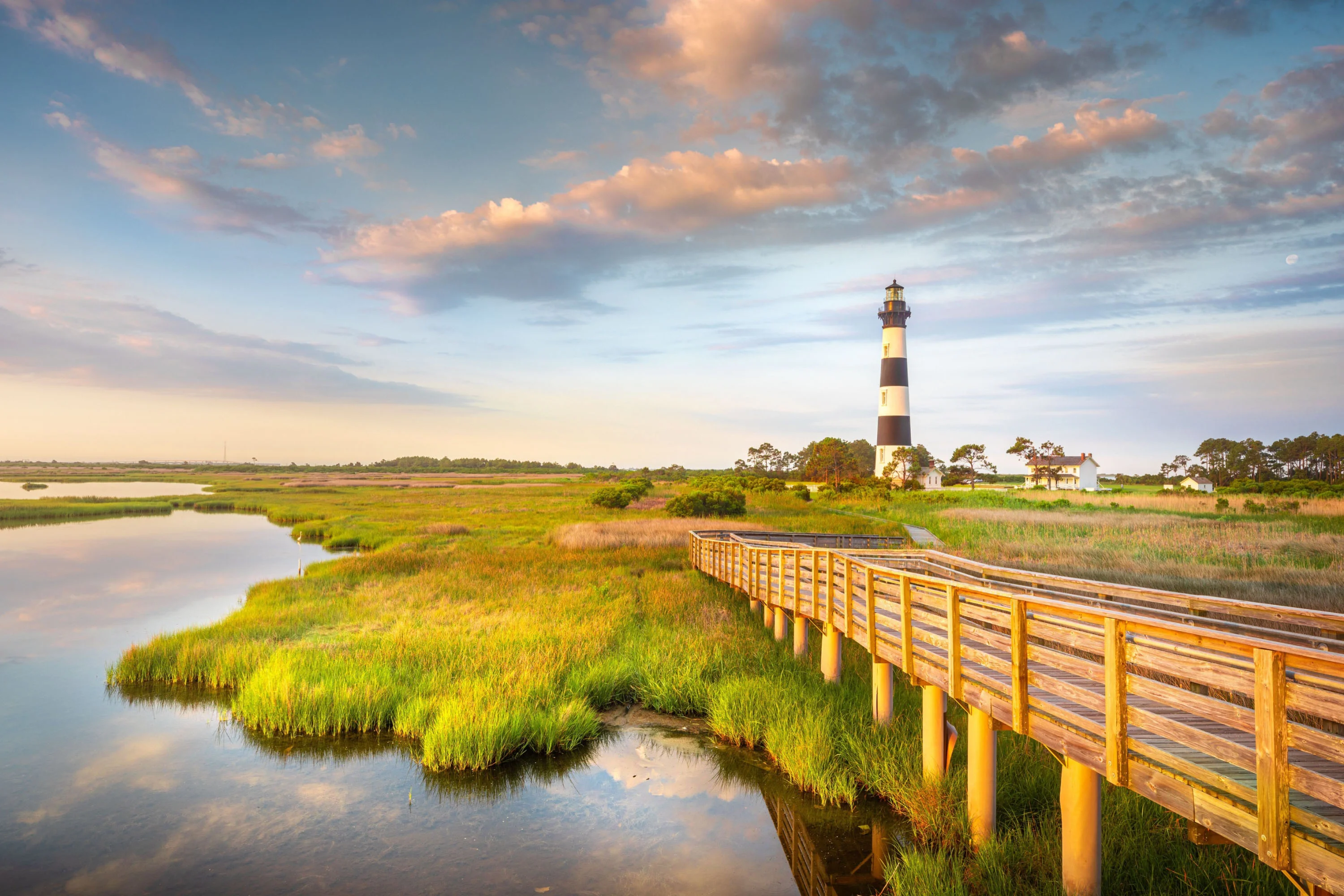



Part of North Carolina’s Outer Banks, Cape Hatteras is the United States’ first national seashore. Stretching 70 miles from Bodie Island in the North to Ocracoke Island in the South, these dynamic barrier islands are constantly in flux, being shaped and reshaped by storms, tides, and wind.
Long known as the “Graveyard of the Atlantic” for its dangerous currents, shifting shoals, and brutal storms, Cape Hatteras is immersed in maritime history. These perilous waters have claimed 2,000 ships over centuries, from colonial merchant vessels to Civil War–era ironclads, and WWII freighters sunk by German U-boats.
Forming an underwater museum and artificial reef system, Cape Hatteras is world-renowned for wreck diving, a type of scuba diving that explores the wreckage of human-made structures.
Beyond shipwrecks and shifting sands, Cape Hatteras has deep culinary roots shaped by its isolation and proximity to the sea. Pop into a seafood shack and look out for Hatteras-style clam chowder, a clear-broth version without cream or tomatoes that was iron-chefed out of whatever early islanders could gather: freshly dug clams, potatoes, onions, and salt pork.
Trip Idea: Surf the East Coast’s Finest
Cape Hatteras’ unique exposure catches swells from almost every direction, earning the title of “surf capital” of the East Coast. Even when the rest of the Atlantic is flat, its constantly shifting sandbars create consistently powerful, hollow waves that rival California or Hawaii in the right conditions. Surf culture is deeply embedded in the Outer Banks, giving Hatteras a distinctly laid-back feel.
Tucked away on the northern end of Bodie Island, just above Oregon Inlet, Coquina Beach is an off-the-radar surf spot that can serve up surprisingly fun waves, especially when a big swell rolls through! It doesn’t pack the same punch or hollow barrels as some of the better-known breaks in the Outer Banks, but surfers of all levels don’t seem to mind. What this wave lacks in power, it makes up for in long rides and small crowds.
After a solid surf session, head south to Old Lighthouse Beach, which is no doubt the best place to see professional surfers in action. Rippers from around the world descend to Old Lighthouse Beach every year, and the Eastern Surfing Association regularly hosts competitions in the area.
Things to Know
- Location: 46375 Lighthouse Road, Cape Hatteras Light Station, Buxton, N.C. 27920
- Getting There: Located along route NC-12
- Camping: Oregon Inlet, Cape Point, Frisco, and Ocracoke campgrounds offer tent, trailer, and RV (recreational vehicle) sites. Reservations encouraged, but walk-ins accepted $28/night. No backcountry camping.
- Fees: Entrance is free all year round
Cape Lookout National Seashore
The most remote of our national seashores, Cape Lookout is a certified International Dark Sky Park and one of the few places you can see the Milky Way with your natural eye.
Accessible only by boat or passenger ferry, you can count on this park to be more peaceful and less overcrowded than other national seashores. It’s truly a secluded experience — beyond a few historic buildings, including the park’s iconic diamond-patterned lighthouse, you won’t find a single paved road, bridge, or town on the entire 56-mile stretch of barrier island.
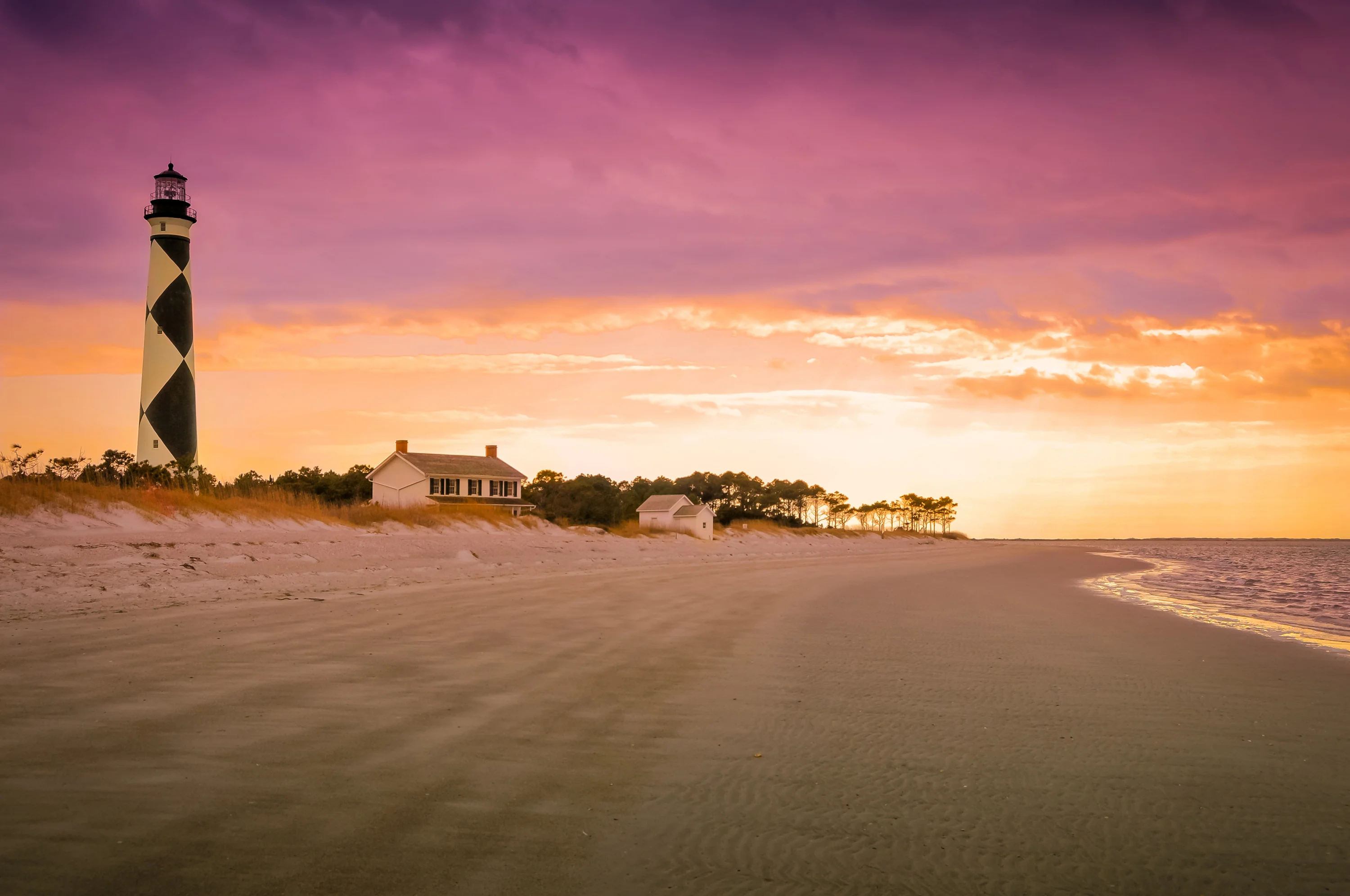



With wild dunes and miles of undeveloped beaches, Cape Lookout offers a glimpse of what the Atlantic coast looked like centuries ago. There are no established campgrounds and limited facilities in the park, but both primitive and vehicle camping are permitted on the majority of the island and beaches (with a few exceptions).
For an even more secluded experience, check out Shackleford Banks, which offers 8 miles of primitive beach camping available to tent campers only. Just keep in mind that all campers should bring enough food and water for the entirety of the trip, as there is no water available on the island, and remember to leave no trace — all trash must be disposed of on the mainland.
Trip Idea: Explore the Coastal Ghost Town of Portsmouth Village
If you’re planning on taking advantage of the unique camping at Cape Lookout, a stop at the historic Portsmouth Village is well worth it. Like so many of the national seashores on the East Coast, Cape Lookout is a capsule of 18th-century maritime history.
Far from the noise of the mainland, the windswept ghost town of Portsmouth Village is a chilling reminder of the impermanent nature of barrier island life — a shifting cycle of death and rebirth.
Once a thriving community centered on “lightering” (transferring cargo from ships offshore), Portsmouth was one of the largest settlements in the Outer Banks. Now a protected historic and archaeological site, Portsmouth stands preserved as a living museum of coastal life.
The Theodore & Annie Slater House, School House, Post Office, and General Store are all open for exploration and staffed by volunteers from mid-April to late October.
Things to Know
- Location: 1800 Island Road, Harkers Island, N.C. 28531
- Getting there: Cape Lookout is only accessible by boat or ferry. Passenger ferries run from Harkers Island, N.C., and Beaufort, N.C. Vehicle ferries run from Davis, N.C. (check for more info)
- Camping: No permits required, but overnight groups of 25 or more are required to obtain a Special Use Permit.
- Entrance fees: There is no entrance fee to the park
Fire Island National Seashore
Only about 2 hours from New York City, Fire Island is accessible, yet surprisingly wild. Aptly described as a “coastal kaleidoscope” by the NPS, Fire Island is a colorful blend of history, counterculture, and a globally rare ecosystem.
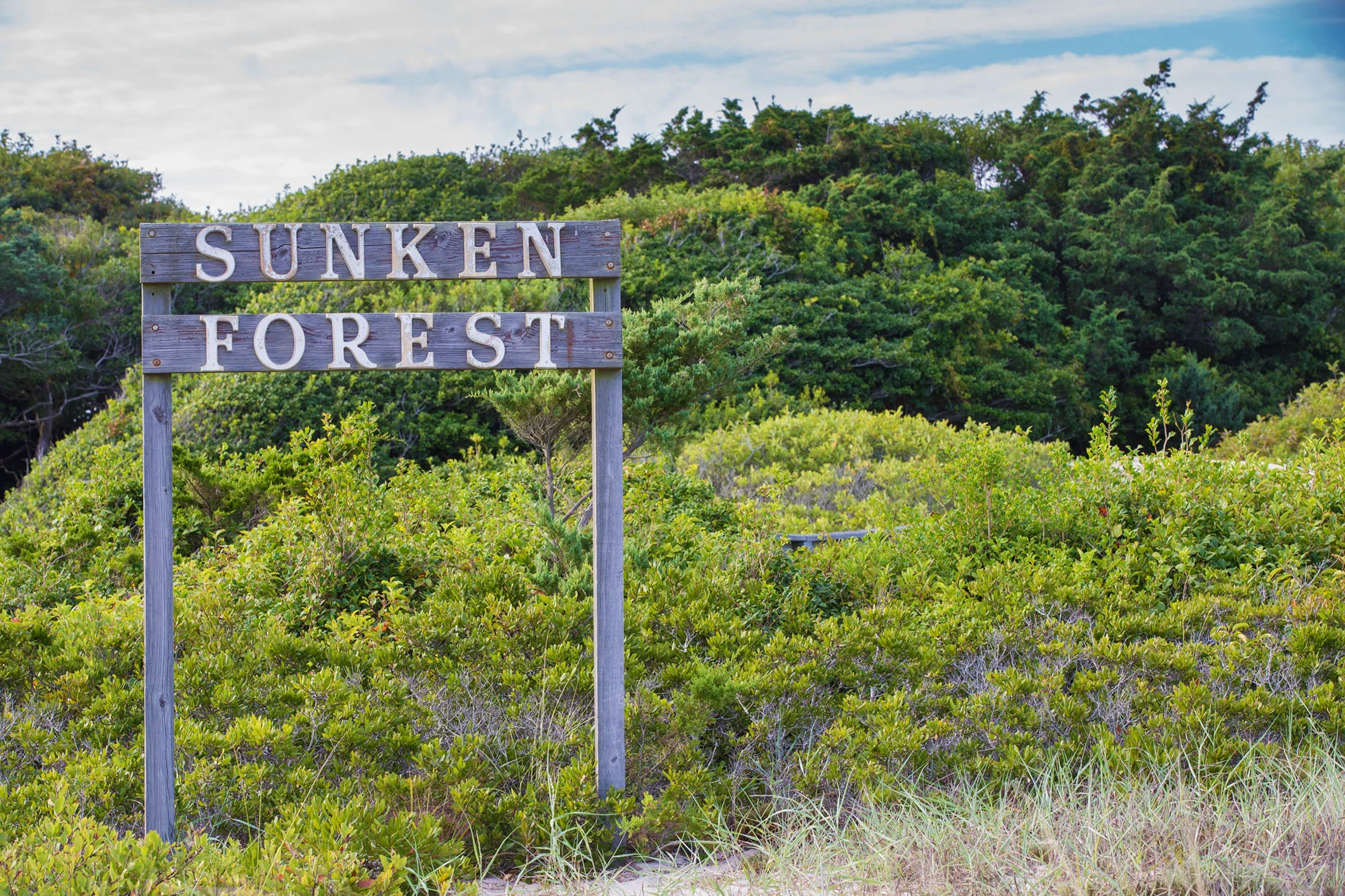



Aside from the 26 miles of incredible beaches, dunes, interdunal scrub, maritime forest, and marshy wetlands, Fire Island is an important landmark for LGBTQ+ culture. Since the mid-20th century, the island has been a social hub and cultural incubator for the queer community.
In a time when homosexuality was criminalized and severely stigmatized, the small, offshore communities of Cherry Grove and Fire Island Pines became a refuge for gay men and lesbians to socialize, build community, and celebrate freedom of self-expression away from the social confinement of the mainland.
Today, you can enjoy the island’s relaxed, bohemian vibe and attend annual events like Invasion of the Pines, a Fourth of July drag event commemorating a 1976 protest.
And for those drawn to nature as much as culture, the island also shelters the eerie Sunken Forest, a rare maritime holly forest growing behind the dunes, where centuries-old trees thrive, shielded from salt and high winds.
Trip Idea: Backcountry Overnight, Otis Pike Fire Island High Dune Wilderness
An easy train ride from Manhattan and a short walk to Patchogue station, take the 40-minute passenger ferry across Great South Bay to Watch Hill Dune Station. Keep in mind that ferry schedules change seasonally, and there are no resupply or reliable water sources in the wilderness area. Make sure to double-check ferry schedules and pack all water, food, and gear needed for the night.
After completing the self-check-in at Watch Hill Dune Station on the Western edge of Fire Island, follow the sandy Burma Trail into the Otis Dune Pike High Dune Wilderness — the only federally designated wilderness area in New York State.
Once an off-road vehicle route for the U.S. Life Saving Service and Coast Guard, the trail is marked by ephemeral dunes and scrubby, maritime thickets of bayberry, beach plum, and the occasional twisted holly.
The western expanse of the high dune wilderness is roughly 7 miles total, but plan to hike at least 1-3 miles west of Watch Hill to reach the prime backcountry spots.
From March 15 through Sept. 1, campers are welcome to set up tents directly on the beach. From Sept. 2 to March 14, campsites must be selected behind the dunes.
While you comb the beach for moon snail shells and quahogs, you might notice that the wild beaches of Otis Pike have a reddish tint, especially near the high-tide line. This subtle color comes from a high concentration of garnet, carried over centuries and eventually deposited on the wild shores of Fire Island.
Things to Know
- Location: Watch Hill Ferry departs from 160-150 West Avenue, Patchogue, N.Y. 11772
- Getting there: Wilderness Visitor at Smith Point County Park (Eastern entrance) or via ferry from Watch Hill Station (Western entrance)
- Camping: Permits are required at both backcountry zones and are subject to a 3-night limit. Open fires are not permitted
- Entrance fees: $25 fee for backcountry camping
Gulf Islands National Seashore
The nation’s largest national seashore, Gulf Islands protects over 160 miles of shoreline between Mississippi and the Florida panhandle. A true gem in the Gulf of Mexico, you’ll find sugar-white quartz sand beaches, aquamarine Gulf waters, and picturesque coastal dunes.
From hiking and camping to fishing, paddling, and snorkeling, Gulf Islands National Seashore offers endless opportunities for adventure on both the mainland and offshore barrier islands, like Santa Rosa Island, Horn Island, and Ship Island.
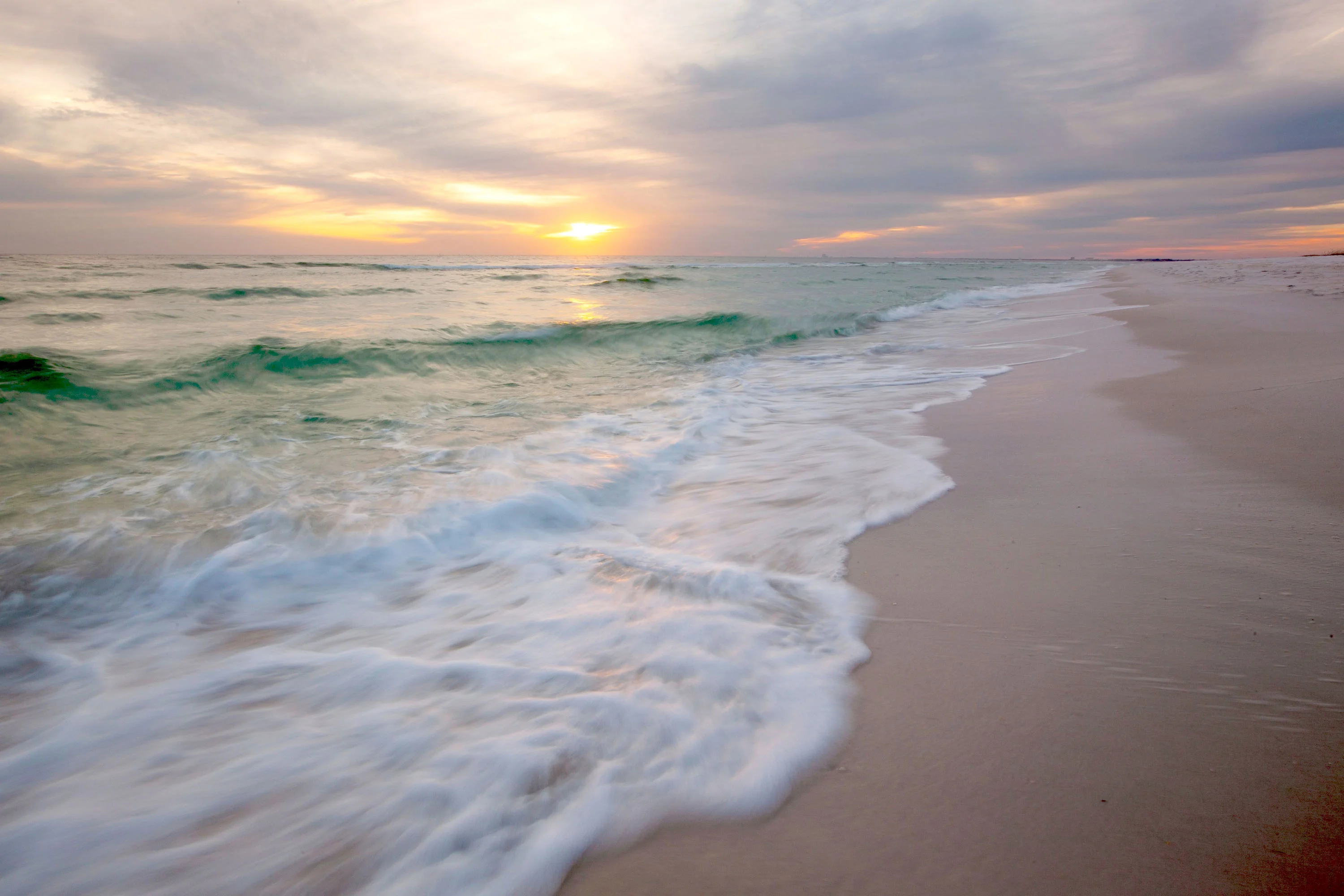



The rich coastal ecosystem of salt marshes, maritime forests, and seagrass beds are fertile habitat for abundant marine life, like bottlenose dolphins, several species of sea turtles, and rays. Visitors can spot bottlenose dolphins year-round, with peak sightings in spring through early fall when the water is warmer and fish are plentiful.
Ship Island off the coast of Mississippi is known to be a frequented feeding spot for the pods that inhabit the Gulf Islands National Seashore.
Trip Idea: Snorkel the Crystal Waters of the Emerald Coast
Easy to access from Perdido Key Drive but largely undeveloped, the eastern side of Perdido Key is a perfect spot for a day trip for groups and families. Protected as part of Gulf Islands, you’ll find Johnson Beach, a stunning white stretch of sand that also offers picnic pavilions, lifeguarded swimming areas, and hiking trails nearby.
Take advantage of the crystal-clear waters of Perdido Key and bring your snorkeling gear! Just offshore at Johnson Beach, you can explore an artificial reef that attracts tropical fish, stingrays, and sea turtles.
For little swimmers, there’s plenty to see in the sparklingly shallow waters and seagrass flats right offshore. Between the remarkable water clarity and vibrant marine life, the stunning biodiversity of the Gulf is sure to be on full display.
Camping is available on the island if you’re up for extending your stay. Find boat-in–only backcountry campsites on the opposite end of Perdido Key, or head to the Fort Pickens Campground located in Gulf Breeze, Fla., which offers RV hook-ups and more amenities.
Things to Know
- Location: 1801 Gulf Breeze Parkway, Gulf Breeze, Fla. 32563
- Getting there: Perdido Key Drive (FL 292)
- Camping: Backcountry and car camping
- Permits/Reservations: Fort Pickens Campground $40/night, reservation required, backcountry camping on Perdido Key, no permit required
- Entrance fees: $25 per private vehicle, $20 per motorcycle, $15 per person (if you enter the park on bicycle or foot)
Padre Island National Seashore
Stretching 70 miles along the Gulf of Mexico, Padre Island is the longest barrier island in the world. This undeveloped, protected shoreline off the Texas coast is home to several important ecosystems, including Laguna Madre, a hyper-saline lagoon spanning over 100 miles to Mexico, as well as rare coastal prairie habitats.
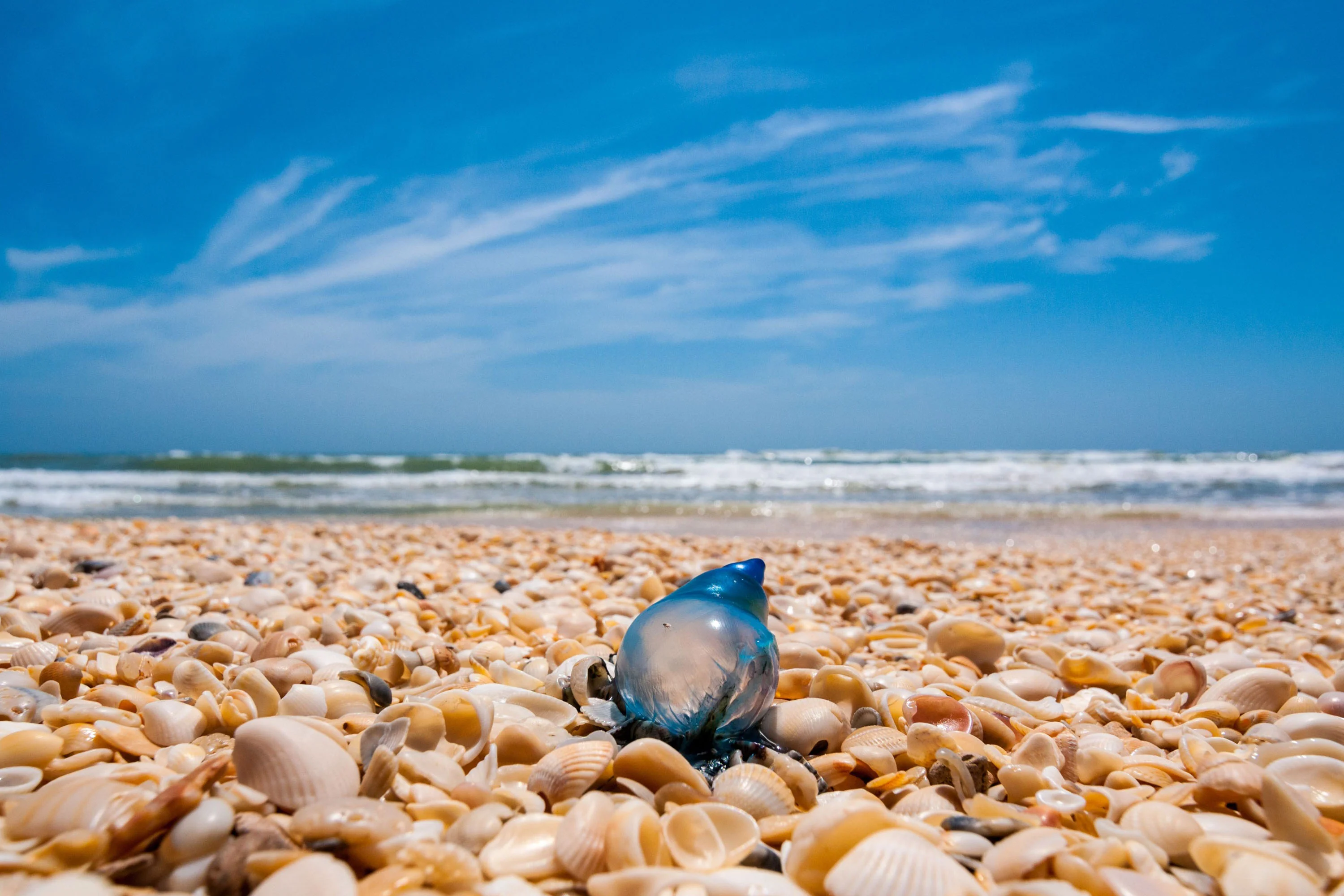



Padre Island is also observed as a vital nesting ground for the Kemp’s ridley, the most endangered sea turtle species in the world. This national seashore is one of the few places you can see newly hatched Kemp’s ridley released into the wild — a spectacle that draws visitors to Padre Island from late April through mid-July.
An angler’s dream vacation, Padre Island offers wade fishing and kayaking fishing in Laguna Madre, as well as surf fishing along its untamed Gulf beaches. Popular catches include red drum, spotted sea trout, black drum, pompano, and the occasional flounder or Spanish mackerel.
Trip Idea: Kayak Fishing in Laguna Madre
After arriving at the Malaquite Visitor Center for maps and tide information, head toward Bird Island Basin Campground to set up camp. Equipped with basic amenities and directly on the banks of Laguna Madre, choose from the 35 primitive designated sites for RV or tent camping, plus 10 additional tent-only sites. Trailers are permitted, so haul your own kayaks or rent watercraft from a local outfitter.
Whether you’re eager to explore the expansive seagrass flats stretching to the southeast or open channels and spoil islands to the west, you’ll find a convenient kayak launch just a short walk from the campground to kick off the adventure.
For sight-casting red drum and spotted trout, we recommend heading southeast to do a 3-mile loop of the Shallow Flats — the clear, shallow water makes it easier to spot fish movement and bait activity. Best at sunrise or early morning when the wind is calm and the fish feed in the aquatic seagrass meadows, this serene paddle in one of the only hyper-saline lagoons in the world is an unforgettable experience.
If you time it right, you could even catch a Kemp’s ridley sea turtle hatchling release. Releases typically occur between mid-June through August at Malaquite Beach.
Check the NPS website for upcoming and scheduled hatchling releases.
Things to Know
- Location: 20420 Park Road 22, Corpus Christi, Texas 78418
- Getting there: From the park entrance station, travel south on Park Road 22 for 0.8 miles (1.2 km). Turn right on Bird Island Basin Road. Travel 1.4 miles (2.2 km) to the campground. Bird Island Basin Campground is located 4.4 miles (7 km) northwest of the Malaquite Visitor Center.
- Camping: Reservations are not accepted. All sites are first-come, first-served. A nightly campground fee is required ($8). All sites are limited to two vehicles, two tents, and eight people.
- Permits: A valid Texas fishing license package (license and endorsement) is required to fish in the park. Children under 17 years of age do not require a license.
- Entrance fees: $25 per private vehicle, $20 per motorcycle, $15 per person (if you enter the park on bicycle or foot)



